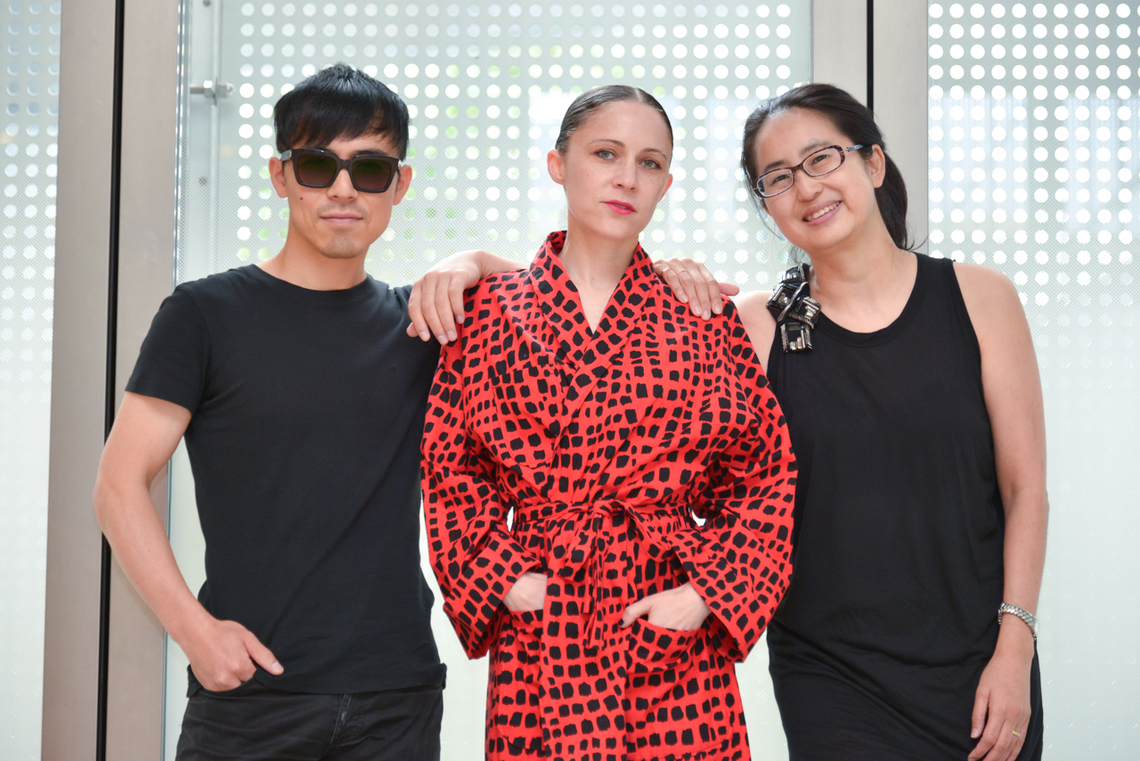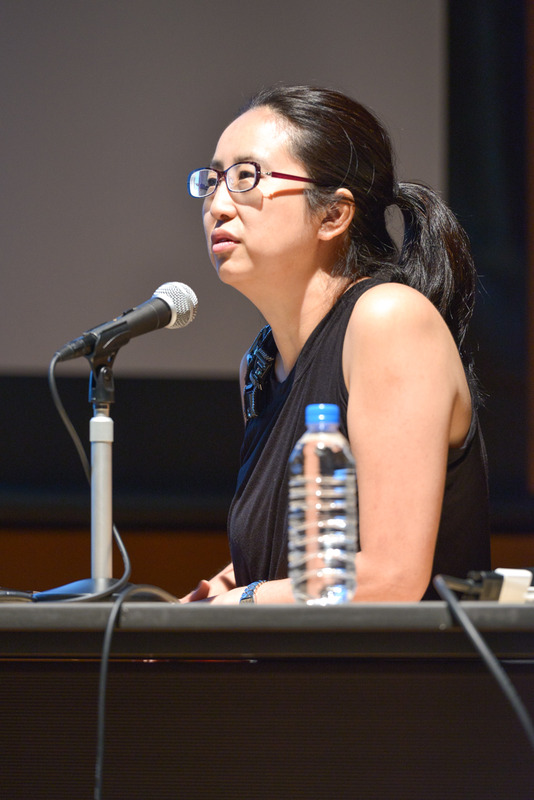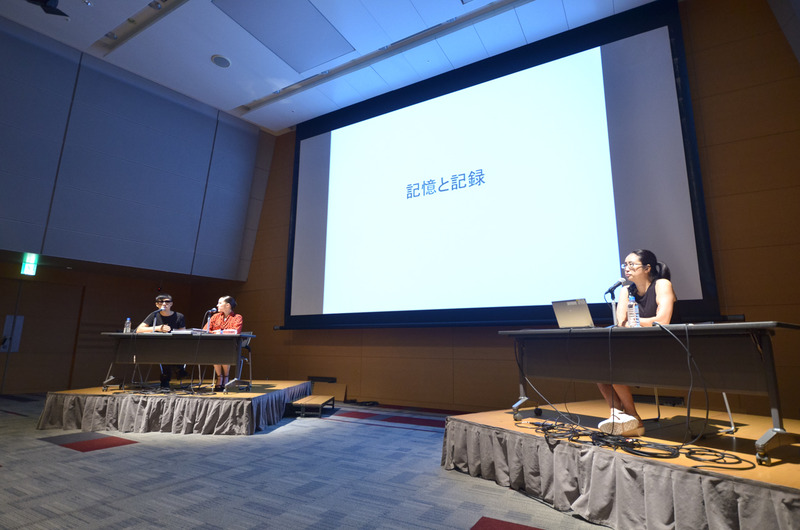Dentsu Digital Inc. Design Talk #120: "Creating New Media Forms with Fashion Imagery! Fashion Branding" Part 2 (Part 1 here ). Tomoyuki Yonezu, Tiffany Godoy, and Ayumi Gunji discuss the potential of magazines in the digital age, Japanese fashion culture, and branding possibilities.

Creating Quality Only Magazines Can Achieve
Special guest Ayumi Gunji joins us here. The conversation begins with Gunji's new career direction.
| |
 |
Gunji: I've transitioned through various magazines, and just recently, effective July 1st, I moved to 'Numero TOKYO'. I originally worked for many years editing the women's magazine 'ViVi'. From there, I launched the magazine 'GLAMOROUS' in 2004. I was working in the world of the so-called Japanese girls' market, which is extremely mainstream and popular, the polar opposite of what Yonezu-kun and Tiffany do. Then one day, out of the blue, the company that publishes 'VOGUE' worldwide asked me to create a new magazine. So in 2008, I transferred to Condé Nast Japan and launched the Japanese edition of 'GLAMOUR'. After that, there were twists and turns—I worked on 'GQ', and in 2011, I launched a new magazine called 'VOGUE girl', focused on showing real Japanese girls how to wear fashion. We also developed a new format called pad size, launching the first pocket-sized magazine. Simultaneously, we focused heavily on the iPad, releasing an app. Both were sized to fit the iPad. The app version was downloaded worldwide, surpassing one million cumulative downloads by the fourth issue. What delighted me was discovering that surveys showed about 30-40% of those downloads came from overseas. Visual communication truly transcends language barriers.
Magazines, web, and the SNS connecting them. I think modern editors must utilize each medium, leveraging their respective strengths and advantages. The most correct use of the web is to properly store information. The magazine becomes the platform where content originates, and the archive is built on the web. To achieve this, creating a quality that only a magazine can deliver is paramount. If the magazine is the heart, I see SNS as the blood vessels. How to get content originating from print to reach as many people as possible—that's where the strengths of each medium come into play.
Paper is memory, the web is record

Tiffany: Now that anyone can launch their own media online, I believe grounding your work in print is a mark of professionalism. Having that as your backbone is incredibly important in today's world.
Gunji: My core aspiration as a magazine editor is to give people memories. Hearing readers say, "That magazine was great," is what sustains my entire editorial career. I once wrote a copy piece titled "What's Wrong with Being a Trend-Follower?" and people still tell me they love it. It's true I struggled for a while with the gap between that experience and the digital flow where things vanish from memory in seconds. After concluding that I should keep my platform analog and use the web and digital as tools, I actually felt a strong urge to return to analog. Within that, I chose 'Numero' because it has the strongest mode of communication and the most possibilities, connecting not just Japan but internationally. That's why I made the move this time.
Yonezu: This return to print, after a full cycle with digital, is about re-examining how we use paper, right?
Gunji: Exactly. What print must do is demonstrate editorial strength and be a paid medium. This creates a relationship where the buyer is already a fan. My answer to differentiating print and web lies in "memory and record." While information flows through the web today—going viral on Facebook, creating buzz—I believe we must keep creating things in print that transcend those countless timelines. Things that make people say, "That Amuro-chan cover in 'ViVi' back then was incredible, wasn't it?" It might be called regressive, anachronistic, or museum-like thinking. But my current mindset is this: for the remainder of my career as an editor, I want to create media that truly leaves a lasting memory.
Tiffany: It's about having truly solid creation, then curating from that. Fashion creation isn't egoism; it's culture. It's a mirror reflecting human life. So, if you pursue that properly, it becomes something lasting. Something you remember years later. That's what we should both be doing.
Yonezu: Ultimately, media equals "having a message," right? Media exists to convey that message to people. If it becomes purely digital, the flow of information just doesn't stick in memory. It becomes mere documentation. Then the question arises: what was that message even about?
Gunji: I agree. Especially what I'm emphasizing in the editorial department now is to always keep the core question of "what do we want to convey?" at the center. Magazines have become more catalog-like lately, and I think fewer media outlets carry that strong, essential message they should be conveying. Furthermore, since the 2000s, there's been a significant shift towards ad-driven production methods. Because of tie-ins, editorial teams feel compelled to allocate substantial page space to those brands, creating a reversal of power between editorial and advertising. That's why what Mr. Yonezu and his team did – completely eliminating ads in the first issue to showcase only their creative expression – was incredibly eye-opening.

Fashion's Contribution to the International Community
Gunji: With the 2020 Tokyo Olympics as a key moment, I believe fashion has an enormous role in what Japan communicates to the world. First, there's no other populace with such high fashion literacy compared to overseas, and I suspect kimono is what fosters that high level of fashion literacy. Kimono is genderless, isn't it? It embodies concepts essential for the future – like creating something adaptable to any situation, folding it down small when not in use, and being able to be remade. It actually holds all these elements: genderless, ethical aspects. I believe it's precisely because Japan created something like this that we must further promote ourselves as a fashion nation. What fashion needs now is to offer insights into Japan's future and be rooted in diverse aesthetic sensibilities. That's a theme we must pursue more deeply, and I want to energize Japanese fashion even further.
Tiffany: The world always takes an interest in Made in Japan. Japan's traditional design culture is completely different from the world's aesthetic sensibilities. I believe original fashion originating from Japan will continue to emerge strongly. However, I feel the younger generation is drifting away from this Japanese delicacy, which is such a waste. Japan's aesthetic sensibility has the potential to become a global standard.

Yonezu: It's fashion meets innovation, right? Japan has tremendous technology and craftsmanship. Let's combine that with our unique fashion vision to create and share new culture with the world.
〈End〉
Planning & Production: Dentsu Inc. Human Resources Bureau, Aki Kanahara Article Editing: Sugatsuke Office Composition Cooperation: Eiji Kobayashi










